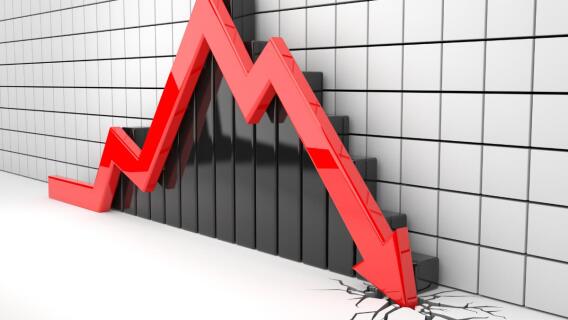The 10.1% decline in the S&P 500 between February 19 highs and the March 11 lows was the fifth-fastest correction for the broader U.S. markets in the last 75 years, ranking just behind 2020’s covid crash, 2018’s trade war sell-off, Eisenhower’s heart attack in 1955 and the beginning of the Korean War in 1950.
At 20 calendar days, this most recent correction ties for fifth place with the “Volcker Shock” of 1979 and the Asian Financial Crisis of 1997.
Aside from Trump’s Trade War 1.0, most of these corrections were triggered by vastly different events happening during vastly different conditions.
Both Eisenhower’s heart attack and the start of the Korean War predate the Fed’s quantitative easing policies, which began in November 2008 and have introduced the concept of a “Fed put,” where accommodative interest rate and balance sheet policies can be deployed to rescue financial markets at the first sign of trouble.
We saw the Fed put in full effect during the aforementioned covid crash, when rates were slashed to zero and the Fed practically doubled its balance sheet, raising the total from $4.2 trillion to $7.1 between March and June of 2020 and dropping the effective fed funds rate from 1.55% to 0.05% between February and April of that year.
Notably, U.S. equity markets also benefitted from significant fiscal stimulus for both individuals and businesses that added $3 trillion to the federal debt pile between the end of Q1 2020 and Q2 2020 alone.
[text_ad]
FundStrat’s Head of Research, Tom Lee, shared his perspective on this correction in a recent Market Minute video and highlighted how the recovery from those prior sell-offs (including 1979 and 1997) played out, noting:
Each of the above is a “fire ready aim” moment, especially the start of the pandemic. At that time, equities fell 10% in only 8 trading days. As shown below (see table), the stock market is higher 1M, 3M, 6M and 12M later:– 5 of 6 times, higher 1M later (except covid)– 6 of 6 times, higher 3M later, median gain 9%– 6 of 6 times, higher 6M later, median gain 15%– 6 of 6 times, higher 12M later, median gain 21%
There are a few important takeaways from that perspective: Most importantly, we’ve seen this kind of action before.
Even during the worst of the selling, when growth stocks are getting whacked and it feels like the world as we know it may be ending, it’s worth remembering that it’s, well, not.
The second most important takeaway is the scale of the drawdown.
During recessions, the median market decline is only 24%, meaning that even if we have lower depths to plumb, we’ve already put a lot of selling behind us.
That said, I do think the recoveries from prior fast corrections deserve a bit of additional context.
The covid crash recovery was powered by immense government intervention, as mentioned earlier, and it’s unlikely, given the current administration’s push for efficiency, that we’ll see nearly the same level of stimulus (although another round of massive tax cuts could certainly provide it).
The Eisenhower/Korea corrections predate the modern Fed (and the S&P 500 as we know it today, for what it’s worth), which makes them outliers.
Yes, the market recovered from those events without an assist from accommodative central bank policies, but the market at the time was also not reliant on those policies for growth.
The best (and most obvious) comparison for our recent correction is, in my mind, the Trade War 1.0.
Where Lee highlights the median recovery for prior rapid corrections, a more appropriate comparison may simply be 2018’s.
After a 13-day, 10% drop in the S&P 500, the market rose by 8% in the next month, 4.5% in the next three, 10.7% in the next six, and was 4.9% higher one year later.
Also of note, a few investment banks have recently lowered their year-end targets for the S&P 500 (Goldman Sachs and RBC to 6,200), which would represent more muted recoveries (10.7% in the next nine months) than the bullish median that Lee cited above.
At this stage, it seems reasonable to anticipate a recovery while remaining somewhat cautious, although there are three factors to watch that could point to a rebound that more closely matches the others.
3 Factors to Watch to Gauge the Rebound
The Fed
Right now, the bond market is expecting the Fed put to come into play, with 2-3 rate cuts over the rest of the year, despite the inflation threat that tariffs represent. The March 19 Fed meeting (later today) could be a major clue on that front, as signals that the Fed is prepared to cut more drastically than stock investors are expecting would be a green light.
Global Capital Flows
The U.S. has attracted a lot of global capital over the last decade-plus. At the end of last year, 72 cents of every dollar invested was allocated to U.S. stocks. That has been a powerful driver for returns, and evidence that money is continuing to flow out of the U.S., or that the outflow is accelerating, should be a hint to lower expectations for the rest of the year. (ETF money flows are one area to watch.)
Trade Policies (and the World’s Response)
President Trump’s prior trade war has conditioned investors to treat threats of tariffs as bargaining chips, not serious risks. Should he continue to delay tariff implementation, roll back tariffs selectively, or remove them when his preferred conditions are met, they could become background noise once again.
The biggest risks on this front are twofold: 1) If Trump imposes tariffs without signs of backing off, there could be more pain ahead as big investors reassess longer-term growth targets and how heavily they want to be invested in U.S. stocks. 2) The rest of the world may not be so quick to treat these threats as “empty” the second time around.
If the world begins (or continues) to treat the U.S. as a non-serious trade partner, it could have serious implications for our economy and hamper a recovery in the stock market.
Expectations for a quick recovery from the fifth-fastest correction in the last 75 years may be a bit overly bullish, and investors would be well served to avoid blindly “buying the dip.” Instead, approach it with a bit of caution, and pay attention to the factors above.
They’ll help you spot the green lights.
[author_ad]

